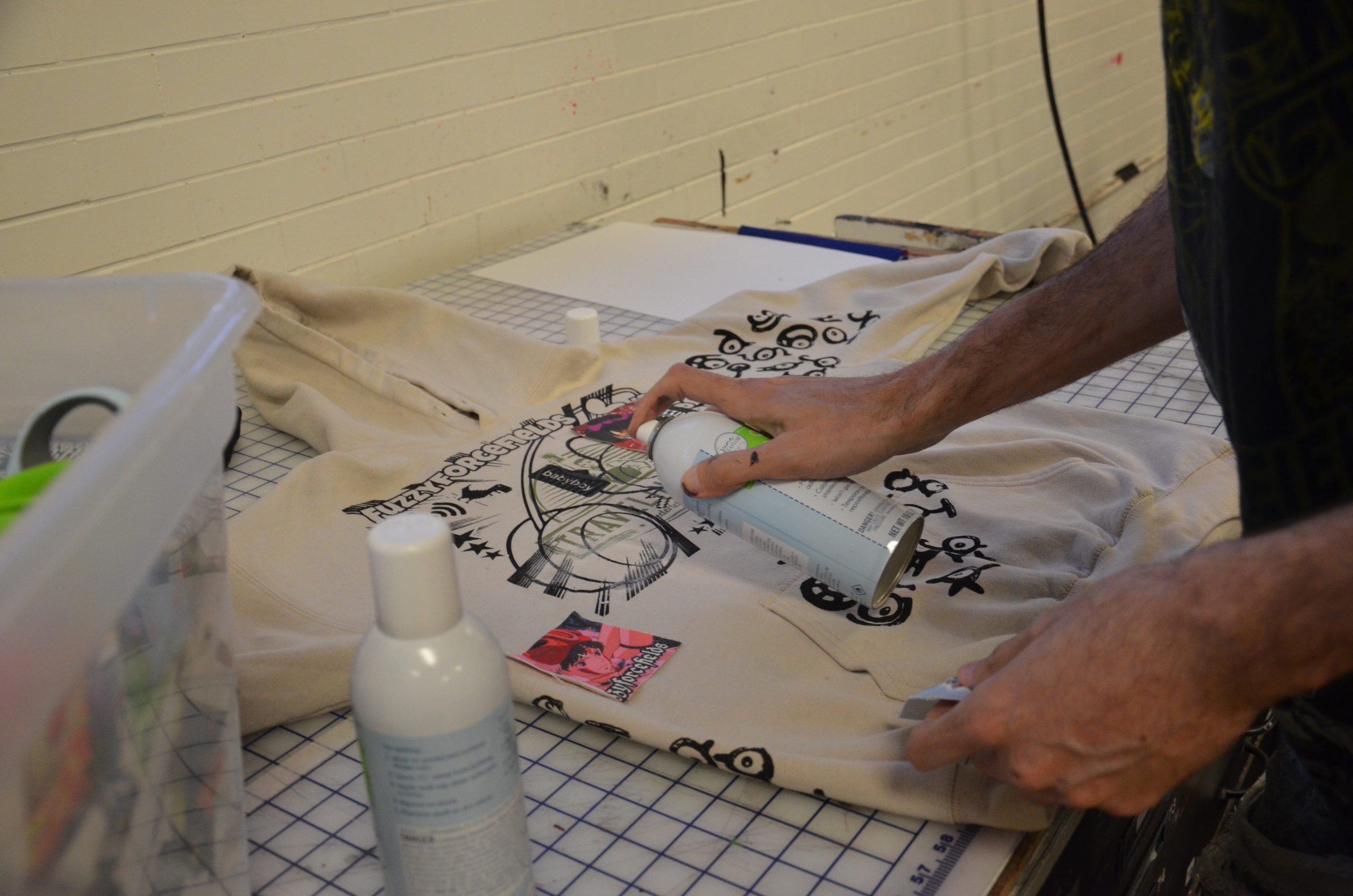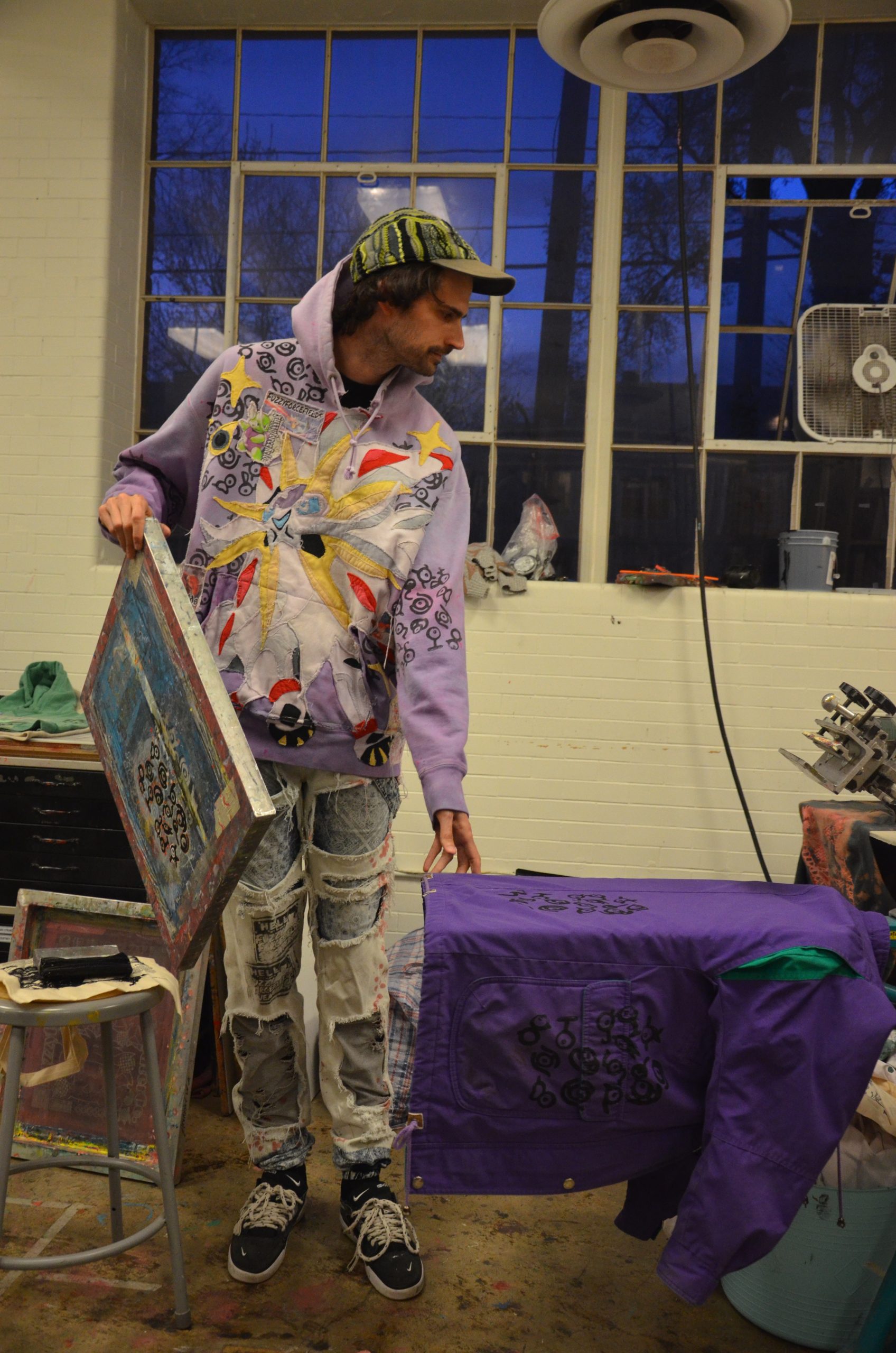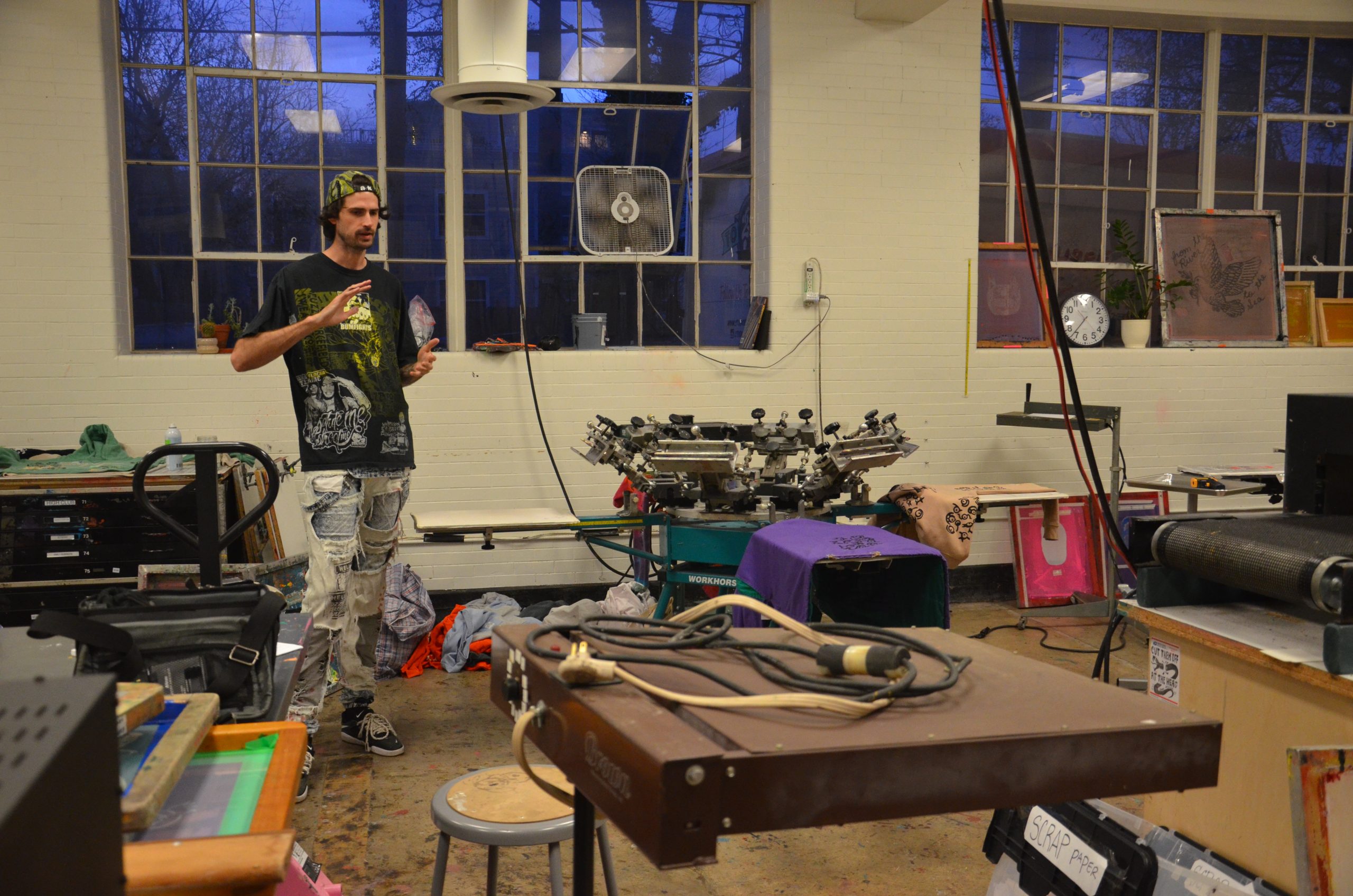I’ve noticed a recurring theme across the city of Richmond: whimsical, one-of-one, custom streetwear pieces featuring ‘90s icons. A mixture of screen printing, patchwork and tapestry-melding — these upcycled, mixed-media works catch your eye across stores and crowds. I visited Studio Two Three in Manchester to better understand how this eccentric and unrepeatable design process has come about to form FuzzyForceFields Sweater Co.
Andrew Walker, founder and lead designer of the collective, is a uniquely authentic creator who is interested in making art more than anything else. He began his interest in design through spray painting, which is reflected in his use of photosensitive screen printing techniques. Andrew showed me how he creates the design on his phone and prints it on transparent paper, before applying photosensitive emulsion to a mesh screen and laying both beneath a light to develop the print.

Digital design on transparent paper, then transferred to mesh print.
There are a few groups who work together in the FuzzyForceFields collective: a patch master, sewing squad and Andrew, who is arguably his own team as he manages sourcing, design, social media, the website and distribution for the brand. When I asked about the sourcing process, Andrew explained that he finds vintage pieces with unique compositions to act as his initial canvas. He also has a buddy in the moving business who provides clothing items discarded by folks as they transition to their new homes.
Across the country, Austin Bruner, a hair stylist based out of Michigan, receives the patches printed on bedsheet-sized rolls of fabric. With her “shear” skill, she cuts out the patches and sends them down to Richmond, where Andrew assigns their placement and temporarily attaches them to the garments using a fixative spray. The sewing squad, a group of friends made up of Eli, Devon, Kaitlin and Dorothy, manage sewing down the edges of the patches Andrew places. From there, the garments are ready to be promoted, shipped and placed in storefronts across the city.

Andrew attaching patches with fixative spray.
When I asked about the origin of the brand name, he explained that it comes from the feeling of putting on a soft and comforting sweatshirt: “It’s like a fuzzy forcefield,” Andrew said. He feels protected by the sensation and says clothing can act as an armor, a shield as you enter the world. He says he doesn’t know anything about fashion … but I would disagree.
His entirely intuitive process of arranging prints and patches shows his self-trained eye in intentionally considering shape, color and movement. When choosing where to place his patches, Andrew works off of what feels right, analyzing the color or pre-existing outline of the garment and screen prints to match the designs of the patches. He explained that when creating one-of-one pieces, he likes to make them as unique as possible by adding designs in unconventional places such as shoulder seams, pockets or hoods. Andrew invited me to choose a few patches for his most current design and said that the collective produces over 100 garments a week.

Andrew printing while wearing his favorite sweatshirt, a collaboration with textile artist Sage, who can be found @saintsage on Instagram.
I couldn’t help but marvel at the relationships Andrew has curated that allow the independent brand to function at such a level. FuzzyForceFields is innately built from these friends, not only to perform the tasks of production, but to inspire Andrew’s design process as he surrounds himself with people who inspire him. His community keeps him playful and curious about the nostalgia that energizes the 90s iconography, allowing the highly identifiable style to function as silent promotion for the brand. Additional promotion is provided by the QR codes printed on the pieces, which are seamlessly integrated into the screen print designs and lead the viewer to the website. The synergistic nature of Andrew’s work continues into the spaces that FuzzyForceFields inhabits, calling on shoppers to remember the wistful community who supports the collective and the art they make.
Andrew implores that he is not creating fashion — he is collaging on clothes and manipulating canvas as his crafted technique. We discussed the importance of utilizing free will as a mixed media artist, as he drew original inspiration for the brand by talking to other artists interested in joining the world of upcycling and one-of-one designs. When I asked Andrew what he would recommend to budding artists in the youthful stages of their careers, he said: “Someone is thinking just like you and wants to see what you want to make. The problem is, they [artists] don’t know that. You just have to do it and put yourself out there.”
You can order custom designs and find these fantastically playful pieces on Instagram and on their website. You can also browse in person at their various storefront locations across Richmond: SwapMeetRVA, the Sidewalk Gallery in the Museum District, Circle Thrift, Passion Project, Toy Lair and Mulligan’s Card Shop.

Andrew in Studio Two Three, explaining his design and merchandising process.
Photography by Helena Dauverd

